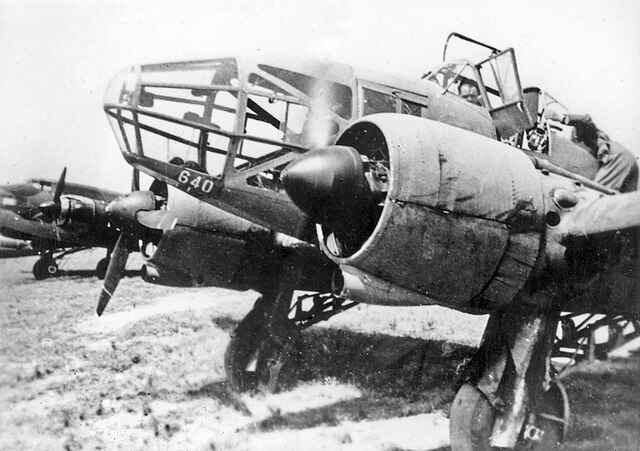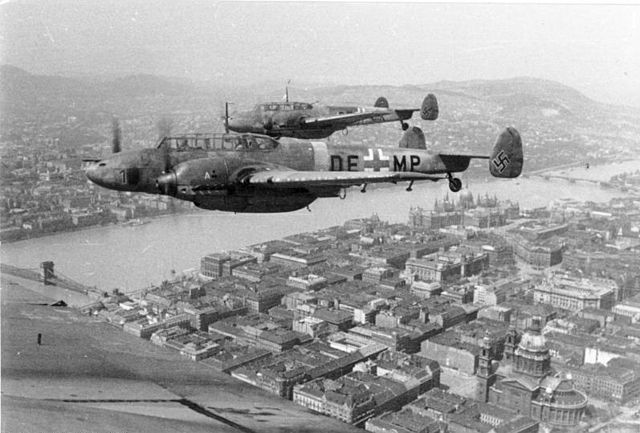The Potez 630 and its derivatives were a family of twin-engined, multirole aircraft developed for the French Air Force in the late 1930s. The design was a contemporary of the British Bristol Blenheim and the German Messerschmitt Bf 110.
Cutaway of the Potez 630.
Front of a Potez 63.11
A Potez 630 captured during the Syria–Lebanon Campaign, 1941
Potez 63.11 in North Africa. January, 1943
The Messerschmitt Bf 110, often known unofficially as the Me 110, is a twin-engined Zerstörer, fighter-bomber, and night fighter (Nachtjäger) developed in Nazi Germany in the 1930s and used by the Luftwaffe during World War II. Hermann Göring was a proponent of the Bf 110, believing its heavy armament, speed, and range would make the Bf 110 the Luftwaffe’s premier offensive fighter. Early variants were armed with two MG FF 20 mm cannon, four 7.92 mm MG 17 machine guns, and one 7.92 mm MG 15 machine gun for defence. Development work on an improved type to replace the Bf 110 - the Messerschmitt Me 210 - began before the war started, but its shakedown troubles resulted in the Bf 110 soldiering on until the end of the war in various roles. Its intended replacements, the aforementioned Me 210 and the significantly improved Me 410 Hornisse, never fully replaced the Bf 110.
Messerschmitt Bf 110
Bf 110s in France in 1942
Bf 110s in flight above Budapest, 1944
Bf 110D-0 with an early "dachshund's belly" fuel tank








